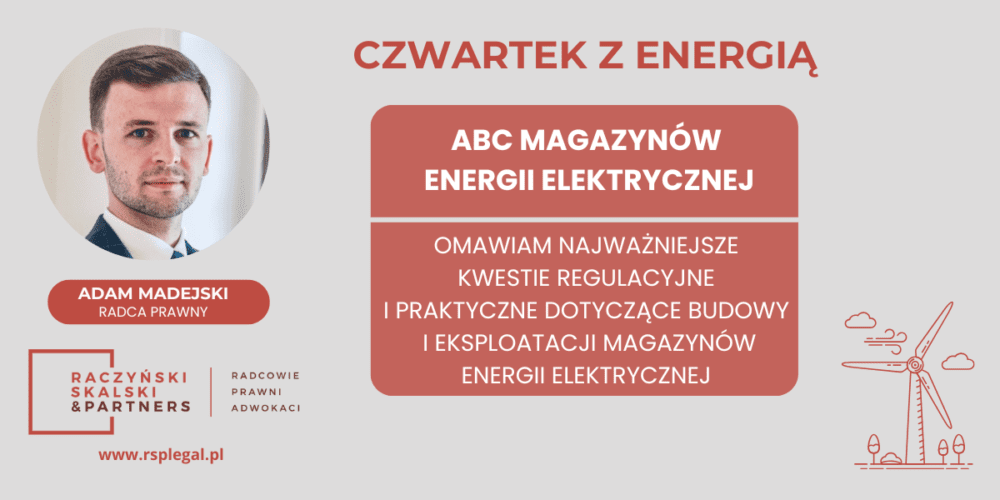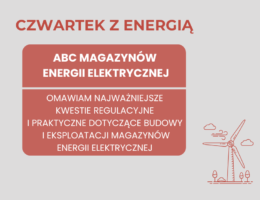Electricity storage is becoming increasingly popular – both as support for RES installations and as support for the capacity market. Today I outline the key regulatory issues to consider when planning an investment in electricity storage.
1. Regulatory issues
The operation of electricity storage is a regulated activity, but only in certain cases. As in RES installations, the installed electrical capacity is decisive. If the storage capacity:
-
-
- Is more than 50 kW – the storage facility is subject to compulsory registration in the register of storage facilities maintained electronically by distribution system operators (Article 43g(1) of the Energy Law,
- Is greater than 10 MW – a licence is required (Article 32(1)(2) of the Energy Law)
-
The entry into the storage register is made by the DSO on the basis of information obtained from the connected entity. It is worth remembering here that, according to the definition of an electricity storage facility, the storage facility must be connected to the electricity grid (Article 3(10k) of the Energy Law). Otherwise, such a facility will not be an electricity storage facility within the meaning of the Energy Law.
It is worth remembering that the installed electrical power is calculated for all storage devices together, as the specificity of electrical energy storage is that the devices in question can be combined in groups to form a self-contained unit. For this reason, the power of all the units is added up within one unit.
As a rule, the connection of an electricity storage facility to the electricity grid requires a connection condition (Article 7(1) of the Energy Law). An exception is a storage facility connected to a micro-installation, in which case a notification is sufficient. However, it should be remembered that in such a case different rules apply for the calculation of the installed electrical power of such a combined installation. The capacity of the storage is not added to the capacity of the microinstallation if:
-
-
- The storage facility has a lower micro-installation capacity, and
- The maximum power of the inverters does not exceed the power of the micro-installation.
-
If at least one of the above criteria is not met, then the storage and micro-installation capacities are added together. It is important to note here that, in the case of prosumers, the power calculated for the RES installation cannot be higher than the connection power for the facility.
2. Practical issues
It is worth remembering that the operation of an electricity storage facility as part of a RES installation is important in terms of:
-
-
- Settlement of prosumers,
- Accounting for support schemes,
- Functioning of energy clusters and energy cooperatives,
- Connection to the electricity grid through cable pooling,
- Construction of a hybrid RES installation.
-
Thus, if an investor intends to build both an electricity storage and a RES installation, he should verify his assumptions with the regulatory aspects included in both the Energy Law and the Renewable Energy Sources Act.
It is worth remembering that on the basis of the definition contained in the RES Act, an electricity storage facility is treated as part of a RES installation. This is of significant importance in cases where local regulations regarding the possibility of development are considered, as as a rule, the construction of RES installations is regulated in local spatial development plans, while provisions on energy storage are rare.
Under the construction law, the status of energy storage facilities remains unregulated and, depending on the implementation formula adopted, it will be necessary to obtain the relevant administrative decisions, arrangements or notifications. It is worth remembering that from a technical point of view, energy storage facilities should also meet fire safety requirements. This is an extremely important issue when selecting a property on which to build an energy storage project, as such a property should ideally have adequate access to a public road, and thus the possibility of possible intervention by the relevant services.



